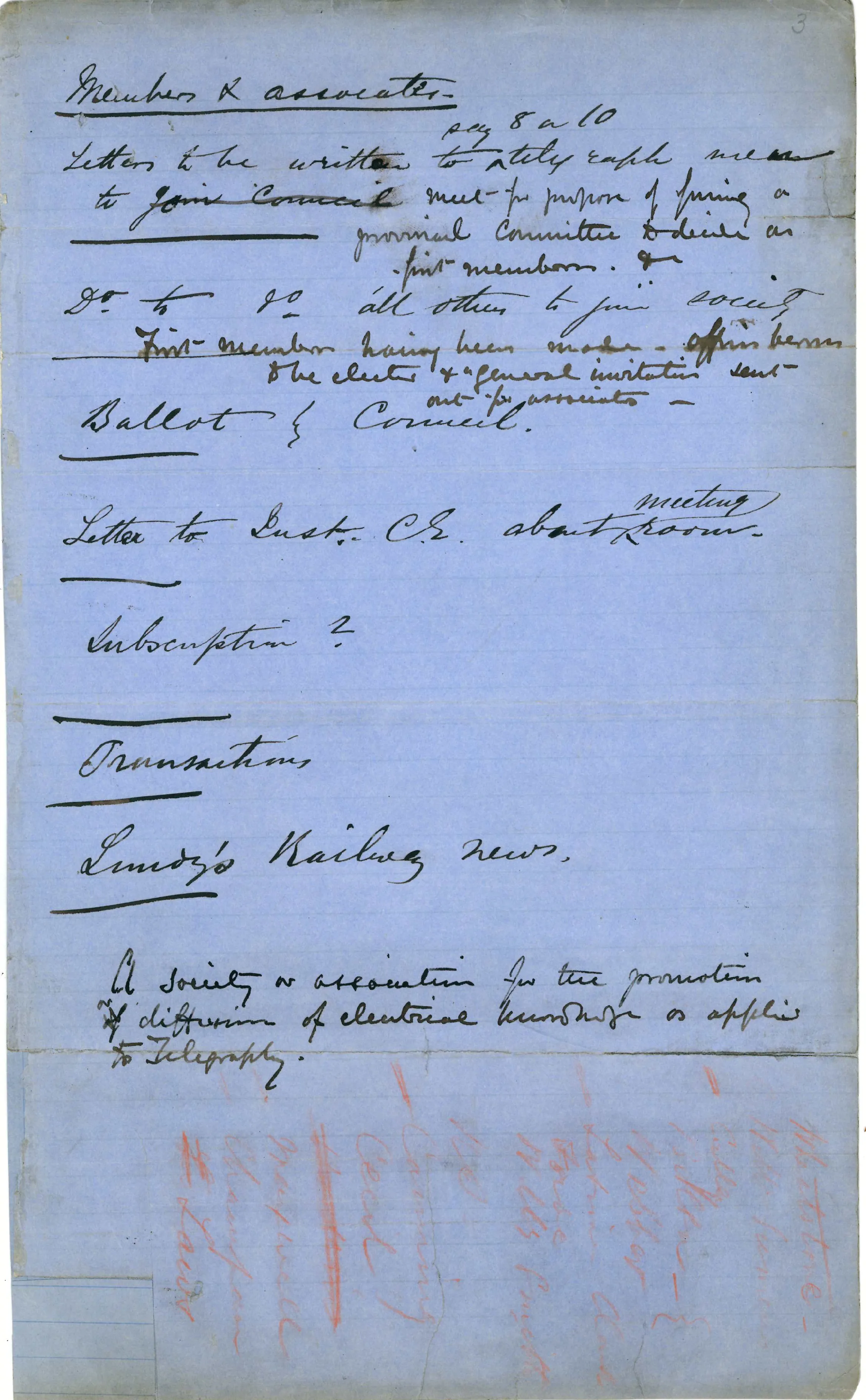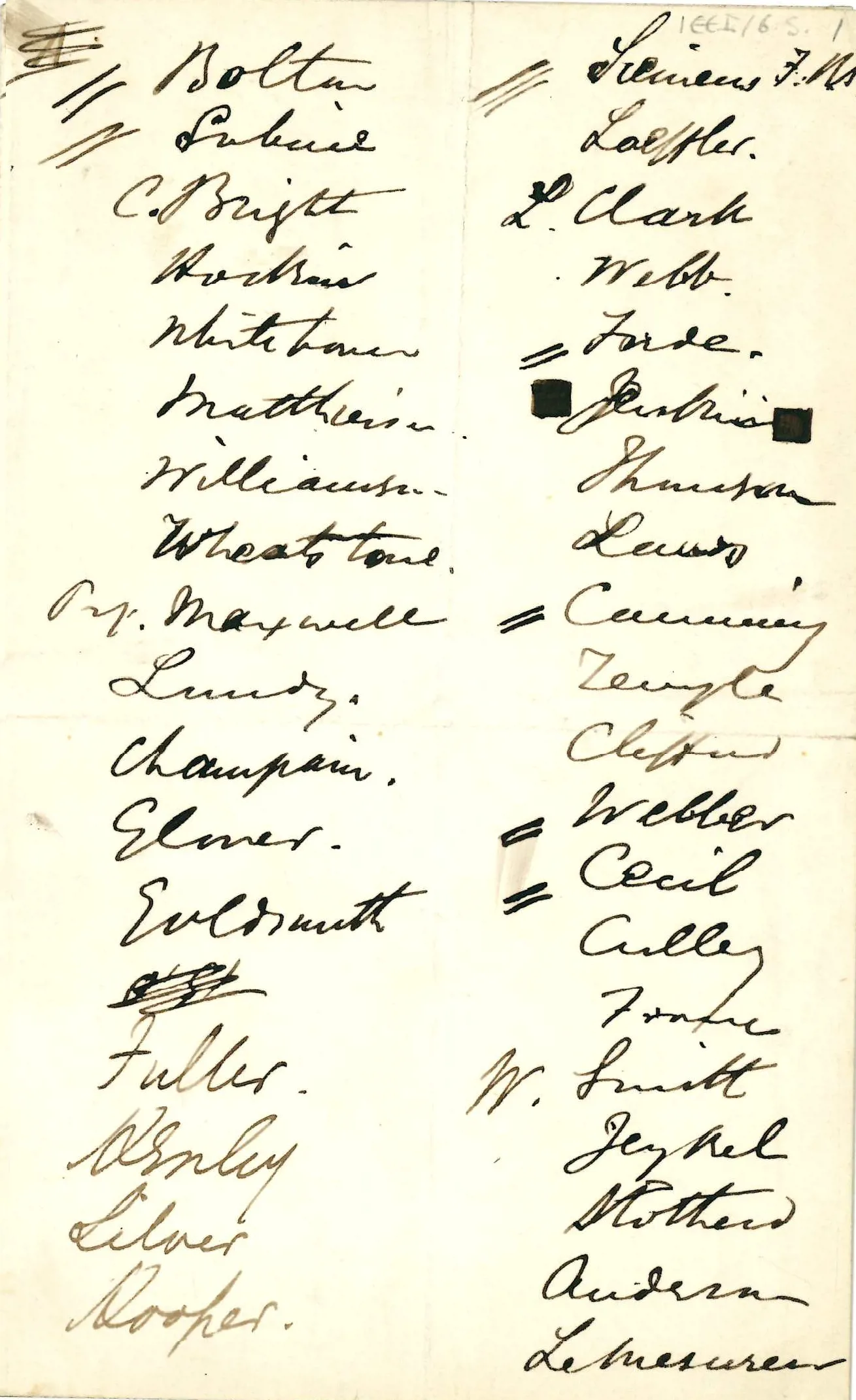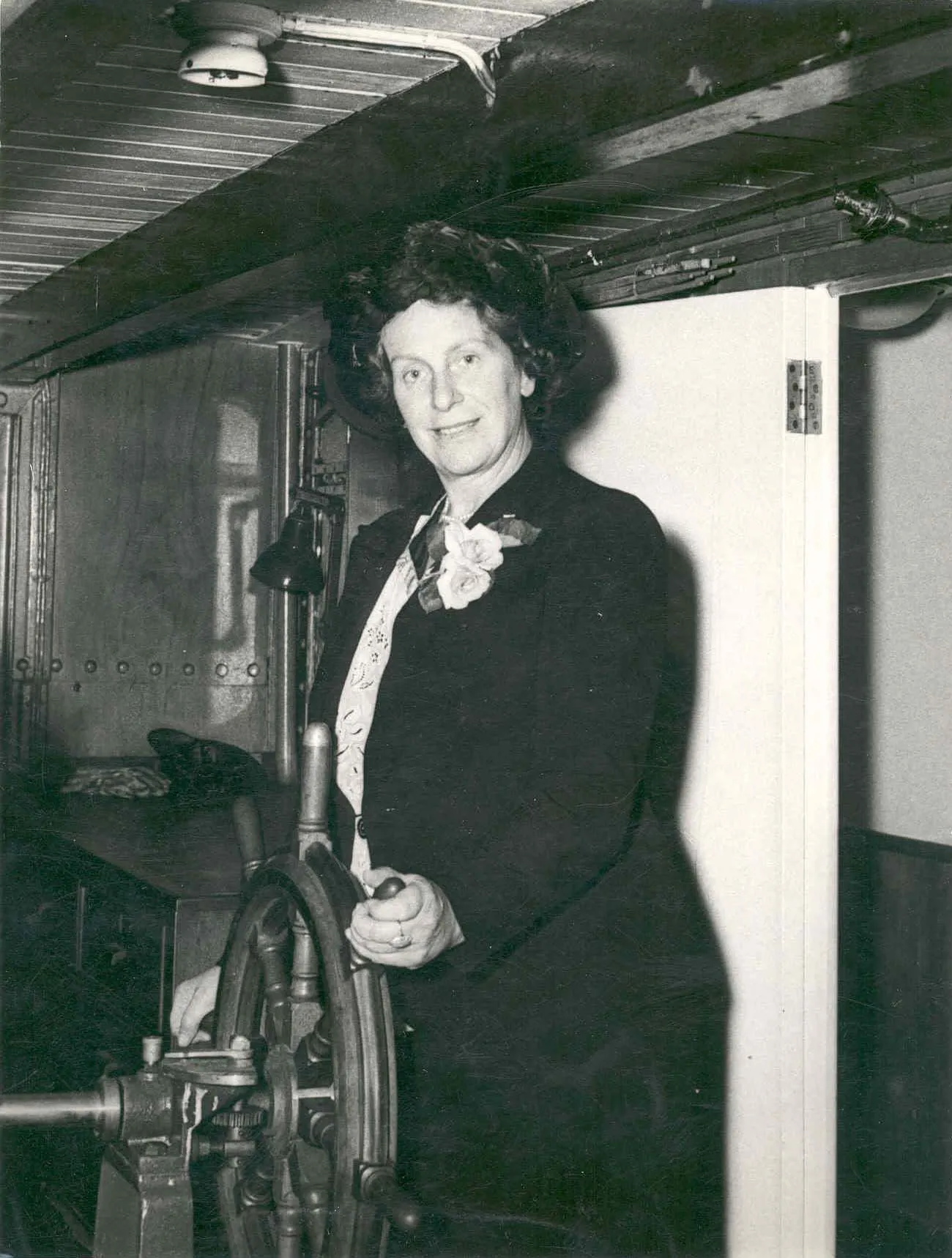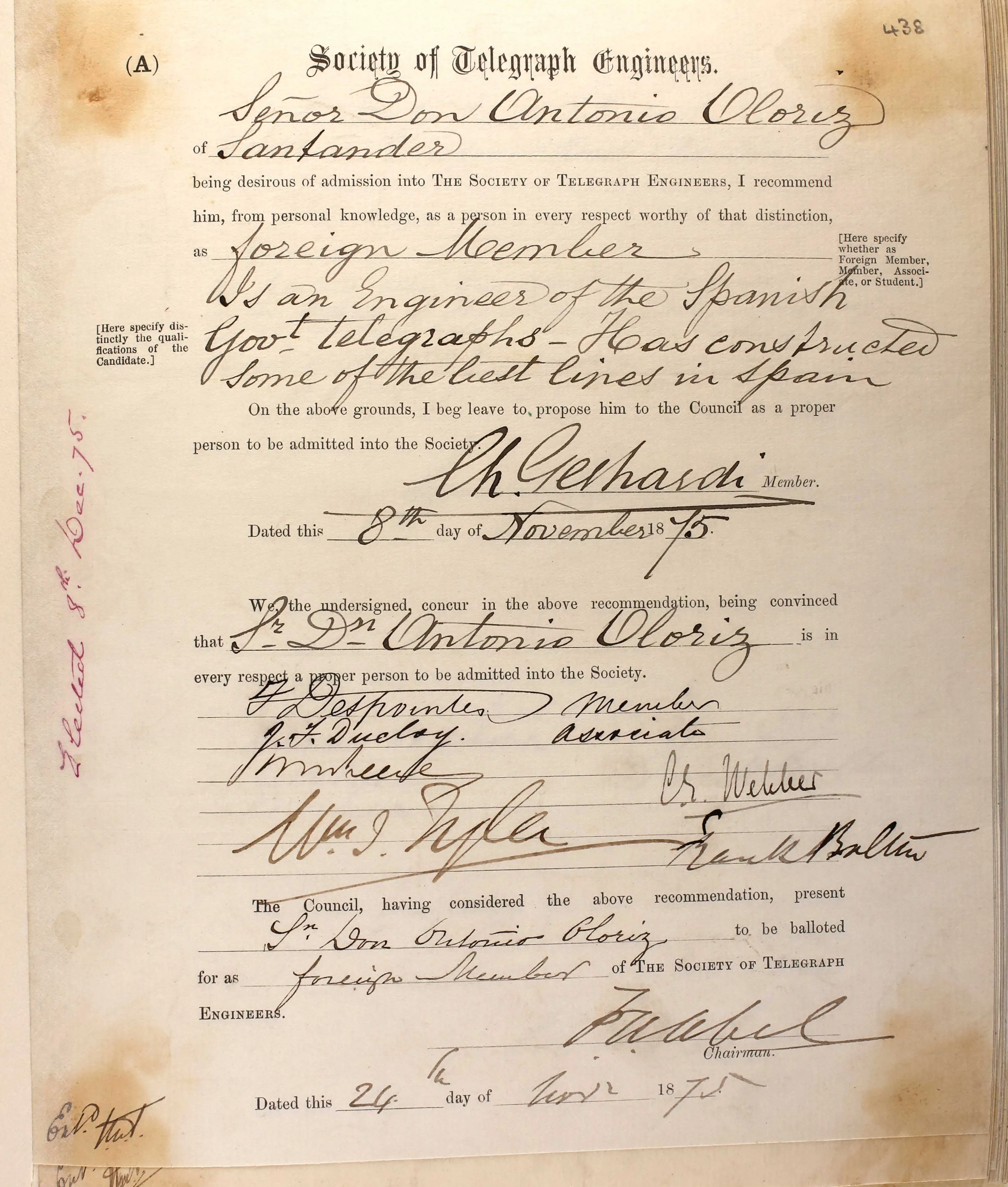The Society of Telegraph Engineers had five classes of membership: Members, Honorary Members, Foreign Members, Associates and Students.
Members were to be ‘regularly educated as a telegraph engineer, according to the usual routine of pupillage, and have had subsequent employment for at least five years in responsible situations’.
They could also have practised as a telegraph engineer for at least 2 years ‘and have acquired a degree of eminence’. Telegraph engineering was still a new discipline, and many telegraph engineers would have originally trained in other branches.

Notes on the foundation of the Society of Telegraph Engineers c 1871 ref. IET/ORG/06/05/3

List of founder members of the Society of Telegraph Engineers ref. IET/ORG/06/05
New members were first elected as Associates, and then transferred to Members after an assessment of their qualifications and experience.
A new grade of Associate Member was created in 1899, a decade after the STE had become the IEE.
After 1899, Associates were those involved with engineering but did not meet the professional qualifications needed for Associate Membership. In 1929, this class was changed to Companion Member.
The grades of Member and Associate Member were reserved for professionally qualified and experienced engineers. After 1924, these members could describe themselves as Chartered Electrical Engineers, and MIEE and AMIEE could be used as professional qualifications.
Students were aged 18-21 and training to be telegraph engineers. Honorary Members were eminent people who were not necessarily practising engineering.
Foreign Members were originally members based outside the UK, but they were transferred to the class of Members in 1911.

Dame Caroline Haslett, Companion Member of the IEE, at ship’s wheel

Membership application form for Senor Don Antonio Oloriz, 1875

Certificate of Appreciation presented to Ernest Moss for his work for the Students Section of the IEE, 1907 ref. IET/UNO/01/16
Membership examinations

Letter from the Red Cross to the IEE, regarding completed examination papers from F Lawrence, Stalag Luft III ref. IET/DEP/09/23/01/01
By the early twentieth century, it was clear that the training of engineers needed to be improved.
In 1912, the Society of Engineers was one of the first of the IET’s predecessor organisations to publish a syllabus for engineering examinations.
The IEE followed in 1913 with its examinations for admission to Associate Membership.
Unlike the Institution of Civil Engineers, the IEE did not have student examinations.
At the same time, the IEE created a new membership class of Graduates, for those who were no longer studying but who hadn’t reached the standards required for Associate Membership.
These examinations were taken in many areas of the world and all circumstances.
During the Second World War, permission was obtained for members to be able to take membership examinations while in prisoner-of-war camps in Europe, as the letter (left) from the Red Cross shows.
More information about engineers' education during World War II can be found in our joint online exhibition 'Engineers At War'.
As new national engineering qualifications were established, such as HNCs, HNDs, the Diploma awarded by Faraday House and undergraduate degrees in engineering, more members became exempt from all or part of the IEE’s examinations when applying for Associate Membership. In 1957, a university degree was required for Associate Membership of the IEE.
The IProdE and IERE followed similar lines, although there was some disagreement between the IERE and IEE on standardised qualifications for membership. The IEE wanted to set a minimum standard of a second-class degree, while the IERE felt this could exclude talented and qualified engineers from aiming for chartered membership.
In 1969, the IEE’s examinations were replaced by the Council of Engineering Institutions (CEI) examinations and from 1973, all Chartered Engineers in the UK were expected to have a degree.
Today, MIEE equates to a Fellow of the IET (FIET) and AMIEE to a Member (MIET).
Membership of the IIE
The IIE (which merged with the IET in 2006) had two classes of membership: Associate and Member. Members were expected to meet the requirements of CEng, IEng or EngTech as set by the Engineering Council.
Membership of the IIE was open to the technician classes of engineers.
Fellows (FIIE) were expected to have been a professional engineer for at least 10 years and a member for at least three.
Further resources
We’re upgrading our systems, and this includes changes to our customer and member account log in, MyIET. It’s part of our big picture plan to deliver a great experience for you and our wider engineering community.
Whilst most of our websites remain available for browsing, it will not be possible to log in to purchase products or access services from Thursday, 17 April to Wednesday, 30 April 2025. Our Member Relations team is here to help and for many of our services, including processing payments or orders, we’ll be able to support you over the phone on +44 (0)1438 765678 or email via membership@theiet.org.
We apologise for any inconvenience this may cause and thank you for your understanding.
For further information related to specific products and services, please visit our FAQs webpage.
